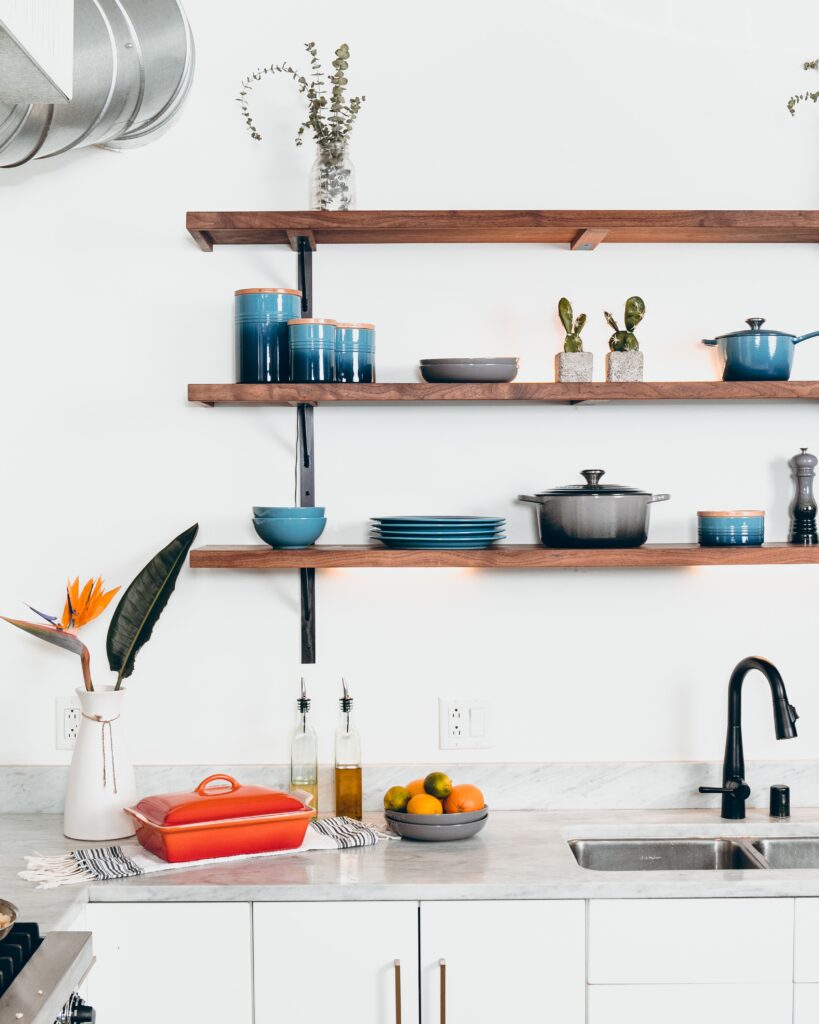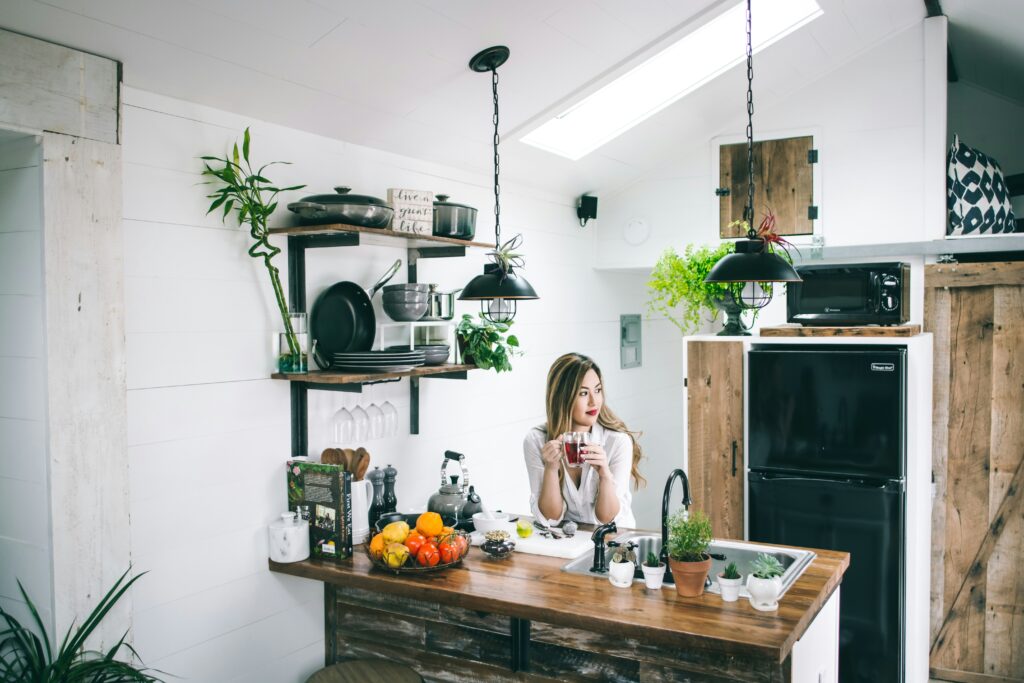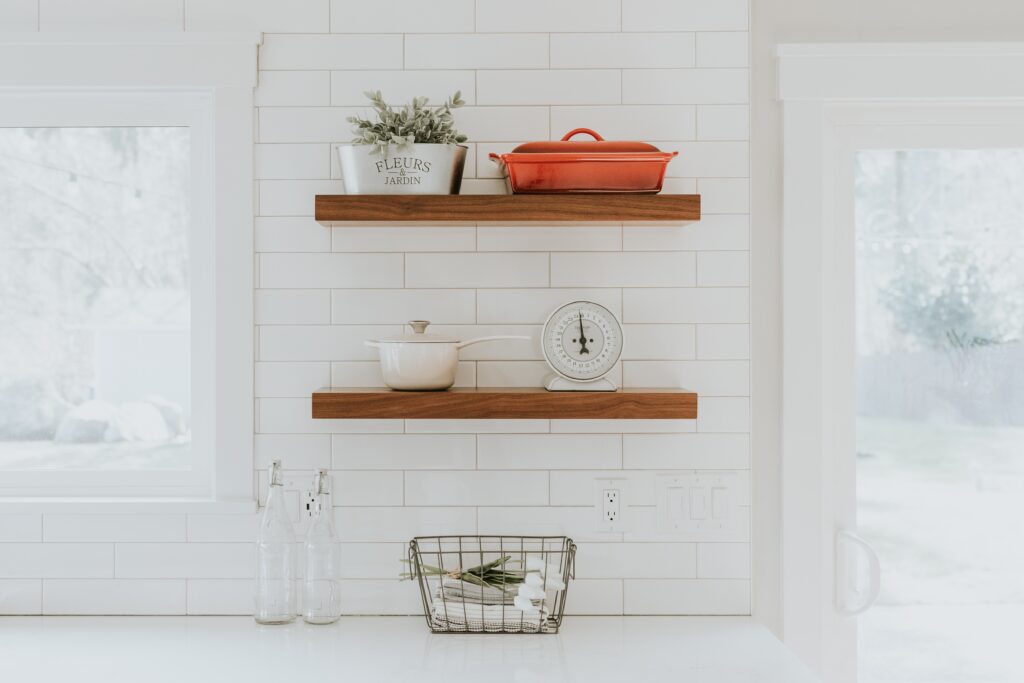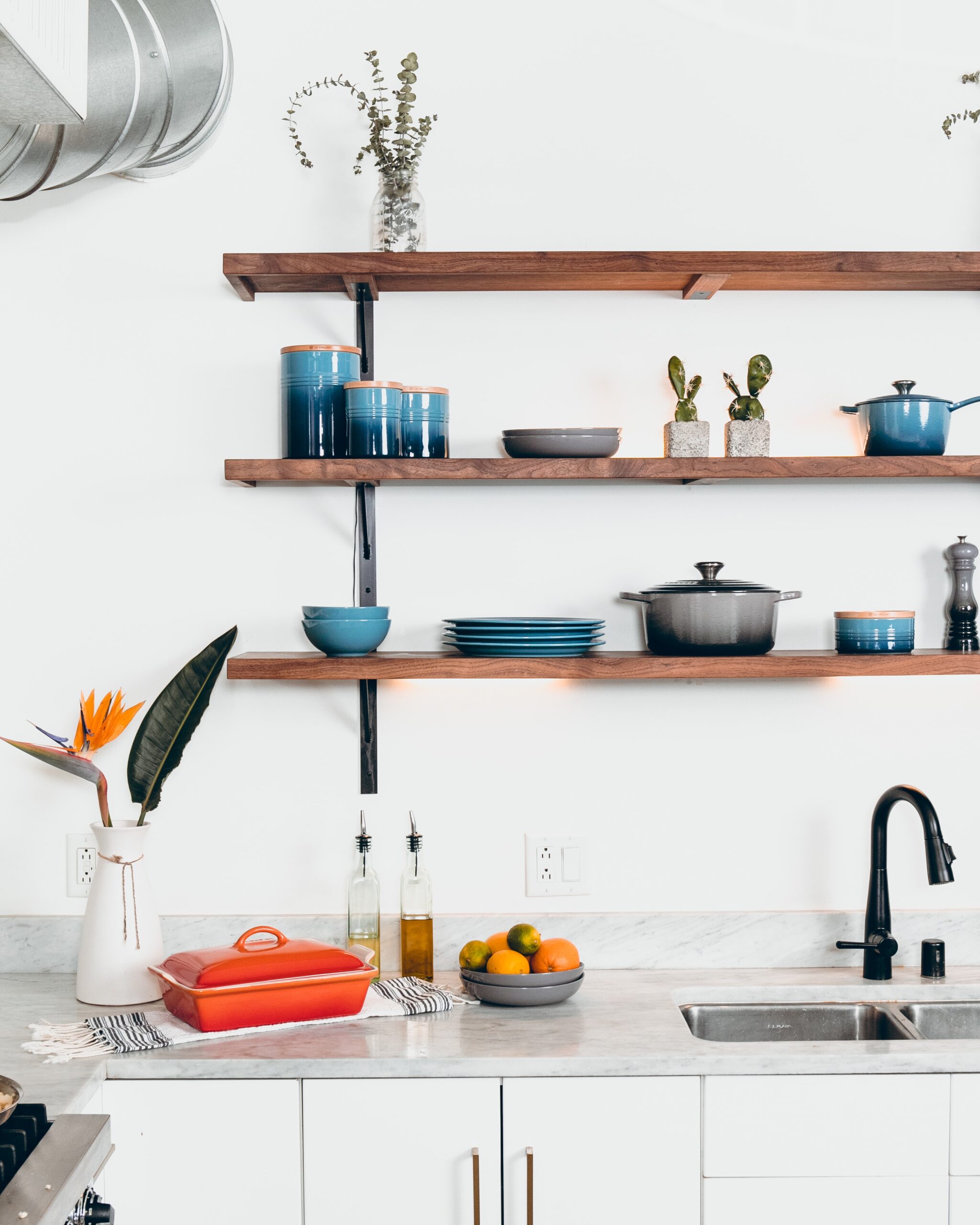If you’ve ever found yourself staring at a brand new kitchen gadget, feeling a mixture of excitement and confusion, then you’re not alone. “Instant Pot how do I just start cooking in it?” We’ve all been there, wondering where to begin and how to make the most of our shiny new tools. In this article, we’re here to help you navigate the world of cooking equipment and give you the confidence to just start cooking in it. Whether you’re a seasoned chef or a beginner in the kitchen, we’ve got you covered with practical tips and easy-to-follow advice. So put on your apron, grab your utensils, and let’s get cooking!

Choosing the Right Accessories for Your Instant Pot
When it comes to maximizing the use of your Instant Pot, selecting the right accessories is as important as understanding its functions. Here’s how to choose accessories that complement your Instant Pot and enhance your cooking experience.
Assess Your Cooking Needs
Consider the types of dishes you frequently prepare in your Instant Pot. This could range from steaming vegetables to making yogurt or baking cakes. Each of these tasks may require specific accessories to ensure the best results.
- For Steaming: A steamer basket or rack is ideal for vegetables, fish, or eggs.
- For Baking: Consider a springform cake pan or silicone muffin cups for making desserts or bread.
Decide on the Type of Accessories
Instant Pot accessories vary in type and function. Some common options include:
- Sealing Rings: Essential for maintaining the pressure, different colored rings can be used for sweet and savory dishes to prevent flavor transfer.
- Glass Lid: Useful for slow cooking or keeping food warm, a glass lid allows you to see inside the pot without releasing heat.
- Egg Rack: Perfect for cooking eggs to perfection.
Evaluate Material and Compatibility
Choose accessories made from materials that are safe and compatible with the Instant Pot. Silicone and stainless steel are popular choices due to their durability and ease of cleaning. Ensure that the size and design of the accessory are suitable for your Instant Pot model.
- Silicone Accessories: Ideal for baking and steaming, they are flexible and heat resistant.
- Stainless Steel Accessories: Durable and perfect for steaming, sautéing, or as a trivet.
Consider Size and Capacity
Match the size and capacity of the accessories with your Instant Pot. If you have a larger model and cook for many people, bigger accessories like a large steamer basket or a tall trivet can be more useful.
- For Small Meals: Smaller accessories are sufficient and can save storage space.
- For Large Batches: Opt for larger baskets or stackable racks to cook multiple items at once.
Look for Convenience Features
Opt for accessories that offer additional convenience and enhance your Instant Pot experience.
- Easy-to-Clean: Dishwasher-safe accessories save time and effort.
- Multipurpose Use: Accessories that serve more than one purpose, like a steamer that doubles as a strainer, offer added value.
- Storage-Friendly: Consider collapsible or stackable accessories to save space in your kitchen.
Selecting the right accessories for your Instant Pot can significantly enhance your cooking experience. By considering your cooking needs, the type and material of accessories, their size and capacity, and additional convenience features, you can effectively utilize your Instant Pot to its fullest potential. With the right tools, your Instant Pot can become an even more versatile and indispensable appliance in your kitchen
Essential Cooking Tools and Utensils
Knives and Cutting Tools
A set of high-quality knives and cutting tools is essential for any home cook. A chef’s knife, paring knife, and serrated knife are commonly used for various food preparation tasks. It’s important to choose knives that feel comfortable in your hand and have a sharp blade for precise cutting. Additionally, investing in a cutting board made of durable material, such as wood or plastic, will help protect your knives and provide a stable surface for chopping ingredients.
Measuring Tools
Accurate measurements are crucial for successful cooking and baking. A set of measuring cups and spoons will allow you to measure ingredients precisely, ensuring consistent results. Additionally, a kitchen scale can be incredibly helpful, especially when it comes to measuring ingredients by weight. Whether you’re following a recipe or experimenting with your own creations, having reliable measuring tools is fundamental.
Mixing and Whisking Tools
Mixing and whisking tools are vital for combining ingredients thoroughly. A whisk is great for whisking eggs, beating batters, and incorporating air into mixtures. A mixing bowl, preferably made of stainless steel or glass, is a versatile kitchen essential that can be used for mixing, marinating, and even serving. Additionally, a spatula and a wooden spoon are valuable tools for folding ingredients, scraping the sides of bowls, and stirring various mixtures.
Cooking Utensils
Having a variety of cooking utensils will make your time in the kitchen more efficient and enjoyable. Some essential cooking utensils include a slotted spoon, tongs, a ladle, and a pasta server. These utensils will help you handle and serve various types of food, from flipping burgers to scooping pasta. Consider the material of the utensils as well, as heat-resistant and non-stick options can provide added convenience and safety.
Pots, Pans, and Baking Sheets
Pots, pans, and baking sheets are the backbone of your cookware collection. A well-stocked kitchen will have a few different sizes of pots and pans to accommodate various cooking tasks. Non-stick pans are ideal for low-fat cooking and easy cleanup, while stainless steel pans are versatile and durable. Baking sheets, preferably with a non-stick coating, are essential for baking cookies, roasting vegetables, and preparing sheet pan dinners. Investing in high-quality pots, pans, and baking sheets will ensure consistent cooking results and long-lasting performance.
Building a Basic Pantry
Stocking Up on Spices and Seasonings
A well-stocked pantry should include a variety of spices and seasonings to enhance the flavors of your dishes. Some essential spices to consider include salt, pepper, garlic powder, onion powder, paprika, cumin, and chili powder. Additionally, herbs like oregano, basil, thyme, and rosemary can bring depth and complexity to your cooking. Experiment with different spices and seasonings to develop your personal flavor profile and elevate your culinary creations.
Essential Oils and Vinegars
Oils and vinegars are pantry staples that add richness and tanginess to a wide range of dishes. Extra virgin olive oil is a versatile oil that can be used for sautéing, dressing salads, and drizzling over finished dishes. Other oils to consider include vegetable oil, coconut oil, and sesame oil, depending on your cooking preferences. Vinegars like balsamic vinegar, red wine vinegar, and apple cider vinegar can be used to brighten flavors and add acidity to dressings, marinades, and sauces.
Staple Ingredients
Building a basic pantry means having a selection of staple ingredients that can be used as a base for many recipes. Some essential pantry staples include rice, pasta, canned beans, canned tomatoes, chicken or vegetable broth, and a variety of dried herbs and spices. These ingredients can be combined with fresh produce, proteins, and seasonings to create flavorful and satisfying meals.
Canned Goods and Condiments
Canned goods and condiments are convenient additions to any pantry. Stock up on canned vegetables, such as corn, peas, and diced tomatoes, which can be easily incorporated into soups, stews, and casseroles. Canned beans, like black beans and chickpeas, are excellent sources of protein and can be used in a variety of dishes, from salads to dips. Condiments like mayonnaise, ketchup, mustard, soy sauce, and hot sauce can add flavor and complexity to your recipes.
Baking Supplies
For those who enjoy baking, having a collection of baking supplies is essential. Some must-have items include all-purpose flour, granulated sugar, baking powder, baking soda, vanilla extract, and unsweetened cocoa powder. These ingredients form the foundation for a wide range of baked goods, from cookies and cakes to bread and pastries. Don’t forget to stock up on baking pans, measuring cups, and silicone baking mats to ensure successful baking endeavors.
Mastering Cooking Techniques
Sautéing and Stir-Frying
Sautéing and stir-frying are cooking techniques that involve quickly cooking ingredients in a hot pan with a small amount of oil. Sautéing is often done at medium-high heat and involves cooking ingredients until they are cooked through and lightly browned. Stir-frying, on the other hand, is typically done at high heat and involves constantly stirring and tossing ingredients in the pan for a short period to retain their color, texture, and nutrients. These techniques are great for cooking vegetables, meats, and even noodles, and can be customized with different seasonings and sauces to create delicious and flavorful dishes.
Boiling and Simmering
Boiling and simmering are fundamental cooking techniques that involve cooking food in a liquid. Boiling refers to bringing a liquid to its boiling point, while simmering involves cooking small bubbles constantly breaking the surface of the liquid. Boiling is commonly used for preparing pasta, blanching vegetables, and cooking grains like rice and quinoa. Simmering, on the other hand, is ideal for slow-cooking soups, stews, and braises. By mastering these techniques, you can ensure that your ingredients are cooked evenly and to the desired texture.
Roasting and Baking
Roasting and baking are dry heat cooking techniques that involve cooking food in an oven. Roasting is typically done at higher temperatures and is ideal for cooking meats, vegetables, and even fruits. It enhances flavors, caramelizes sugars, and results in a crispy exterior and moist interior. Baking, on the other hand, is typically done at moderate temperatures and is used for making bread, cakes, cookies, and pastries. Both techniques require careful temperature control and timing to achieve optimal results.
Grilling and Barbecuing
Grilling and barbecuing are outdoor cooking methods that result in flavorful and charred ingredients. Grilling involves cooking food directly over high heat, usually on a grill grate, for a short period to create beautiful grill marks and smoky flavors. Barbecuing, on the other hand, is a slow cooking method that involves lower temperatures and longer cooking times. It’s often used for large cuts of meat, such as ribs or brisket, and requires the use of indirect heat and smoke to infuse flavors. Whether you prefer the convenience of a gas grill or the traditional flavor of charcoal or wood, mastering these techniques will elevate your outdoor cooking experiences.
Steaming and Poaching
Steaming and poaching are gentle cooking techniques that involve cooking food by steam or in a liquid at a low temperature. Steaming involves placing food in a steamer basket or atop a rack and allowing hot steam to cook the ingredients. This technique is perfect for retaining the nutrients and natural flavors of vegetables, seafood, and dumplings. Poaching, on the other hand, involves cooking food in a simmering liquid, such as broth or wine, until it is tender and flavorful. Poaching is commonly used for delicate proteins like fish, chicken, and eggs. These techniques are ideal for healthy cooking and preserving the natural qualities of ingredients.

Understanding Heat and Temperature Control
Gas Stove versus Electric Stove
The choice between a gas stove and an electric stove comes down to personal preference and cooking style. Gas stoves offer instant heat and precise temperature control, allowing for immediate adjustments during cooking. They are preferred by many professional chefs for their responsiveness and even heat distribution. Electric stoves, on the other hand, provide consistent heat and are often more affordable. They work well for slow cooking and baking but may take longer to heat up and cool down. Consider your cooking needs, budget, and kitchen setup when deciding between a gas or electric stove, as both options have their advantages and considerations.
Using the Oven Effectively
The oven is a versatile tool that can be used for a wide range of cooking and baking tasks. To use the oven effectively, it’s important to preheat it to the desired temperature before starting to cook. Preheating ensures that the oven reaches the proper temperature for even cooking. When using the oven, be mindful of the rack placement. Placing the rack in the center of the oven will generally provide the most even heat distribution. If you’re cooking multiple dishes at once, consider rotating the pans halfway through cooking to ensure even browning. Lastly, remember to use oven mitts or heat-resistant gloves when handling hot pans and dishes.
Adjusting Heat Levels
Adjusting heat levels during cooking is crucial for achieving the desired results. For recipes that require high heat, such as searing a steak, it’s important to heat the pan or grill to the appropriate temperature before adding the ingredients. Lowering the heat during cooking can help prevent burning and ensure the food is cooked evenly. When sautéing, stirring frequently and adjusting the heat as necessary will help prevent ingredients from sticking or becoming overly browned. Practice adjusting heat levels according to the cooking techniques you’re using to create perfectly cooked dishes.
Monitoring Cooking Temperatures
To ensure food is cooked to the appropriate internal temperature, it’s essential to use a food thermometer. Different types of food have specific safe internal temperatures that should be reached to ensure they are cooked properly and free from harmful bacteria. For example, poultry should reach an internal temperature of 165°F (74°C), while medium-rare steak should reach around 145°F (63°C). Insert the thermometer into the thickest part of the food, away from bones or fat, to get an accurate reading. By monitoring cooking temperatures, you can ensure food safety and optimal flavor.
Dealing with Hotspots
Hotspots in pans or on grills can be challenging to deal with, as they can cause uneven cooking and potentially burn your food. To minimize hotspots, it’s helpful to preheat your cookware evenly before adding the ingredients. This allows the surface of the pan or grill to reach a consistent temperature. Additionally, moving the pan or grill occasionally during cooking can help distribute heat more evenly. If you notice persistent hotspots, consider rotating the pan or adjusting the heat accordingly to prevent overly browned or burned areas.
Following Recipes and Measurements
Reading and Understanding Recipes
Reading and understanding recipes is key to successful cooking. Start by thoroughly reading the recipe from beginning to end to familiarize yourself with the ingredients and steps involved. Pay close attention to any special techniques or equipment needed. Understanding recipe terms, such as “simmer,” “fold,” or “grease,” will help you execute the recipe accurately. If you’re unsure about a particular step, don’t hesitate to consult cooking references or online resources for clarification. As you become more experienced, you can also start experimenting with recipes and adapting them to your preferences.
Using Measuring Cups and Spoons
Using measuring cups and spoons is essential for accurate measurements in cooking and baking. When using dry ingredients, spoon them into the measuring cup/spoon and level off the excess with a straight edge. For liquid ingredients, place the measuring cup on a flat surface and pour until the desired level. When measuring sticky ingredients like honey or molasses, coat the measuring cup/spoon with cooking spray to make it easier to release the ingredient. Always use leveled measurements to ensure recipe success and consistent flavors.
Weighing Ingredients
While using measuring cups and spoons provides accurate measurements for most recipes, weighing ingredients can offer even greater precision, especially in baking. Baking is a precise science, and ingredient ratios play a crucial role in achieving the desired texture and consistency. A kitchen scale allows you to measure ingredients by weight, which eliminates variations caused by factors like how tightly an ingredient is packed. Using a scale can be particularly helpful when it comes to measuring flour, which can easily be packed too densely when using measuring cups.
Converting Measurements
Converting measurements can be necessary when using recipes from different countries or adjusting serving sizes. Keep a conversion chart handy for common conversions, such as ounces to grams or teaspoons to milliliters. Online conversion calculators are also available and can quickly convert measurements for you. Pay attention to the specific ingredient you’re converting, as some ingredients have different densities and may require a different conversion ratio. Accurate measurements are essential for recipe success, so take the time to convert measurements accurately to ensure the best possible outcome.
Adjusting Recipes to Taste
Recipes are meant to be a guide, and adjusting them to suit your personal taste preferences is part of the fun of cooking. Once you’ve become familiar with a recipe and feel comfortable with the ingredients and techniques involved, feel free to add your unique touch. If you prefer a bolder flavor, you can increase the amount of spices or seasonings. If you like a dish with more heat, add some chili flakes or hot sauce. Experimenting with different ingredients and adjusting recipes to your taste can help you develop your culinary style and create dishes that you truly love.

Safety Tips in the Kitchen
Handling Sharp Objects Safely
When working with sharp objects like knives, it’s crucial to prioritize safety. Always use a cutting board with a stable surface to prevent slips and accidents. Hold knives correctly by gripping the handle firmly and keeping your fingers away from the blade. When cutting, use a rocking motion with the knife, using your knuckles as a guide for the blade. Never leave knives in a sink filled with soapy water, as they can easily be hidden and lead to accidental cuts. Store knives in a knife block or on a magnetic strip to keep them out of reach of children.
Preventing Burns and Scalds
Burns and scalds can occur while cooking, so it’s important to take precautions to prevent accidents. When working with hot pots, pans, or baking sheets, always use oven mitts or heat-resistant gloves to protect your hands. Handle hot dishes with care and use trivets or heatproof mats to protect countertops and tables. When working on the stovetop, turn handles of pots and pans inwards to prevent accidental spills. Keep a fire extinguisher nearby in case of emergencies, and be familiar with its proper use.
Proper Food Handling and Storage
Proper food handling and storage are essential for food safety and preventing foodborne illnesses. Wash your hands thoroughly with warm water and soap before and after handling food, especially raw meats and eggs. Use separate cutting boards and utensils for raw and cooked foods to prevent cross-contamination. Store perishable foods, such as meat and dairy products, in the refrigerator at the appropriate temperature. Label and date leftovers to ensure they are used within a safe timeframe. By following these practices, you can minimize the risk of foodborne illnesses and ensure the safety of your meals.
Avoiding Cross-Contamination
Cross-contamination occurs when bacteria from raw food comes into contact with ready-to-eat food, leading to potential foodborne illnesses. To avoid cross-contamination, always use separate cutting boards and utensils for raw and cooked food. Clean and sanitize countertops, cutting boards, and utensils thoroughly after each use. When marinating meat, discard any leftover marinade that has come into contact with raw meat, as it may contain harmful bacteria. By maintaining proper hygiene practices and separating raw and cooked foods, you can prevent cross-contamination and keep your kitchen safe.
Fire Safety and Extinguishing Methods
In the event of a kitchen fire, it’s essential to be prepared and know how to extinguish the fire safely. For small fires, such as a stovetop grease fire, turn off the heat source and cover the pan with a lid or a cookie sheet to smother the flames. Never use water to extinguish a grease fire, as it can cause the fire to spread. If the fire is too large to handle, evacuate the area immediately, close the door to contain the fire if possible, and call emergency services. Having a fire extinguisher in the kitchen and knowing how to use it can be lifesaving in case of emergencies.
Experimenting with Flavors and Ingredients
Exploring Different Cuisines
Experimenting with different cuisines can inspire creativity in the kitchen and broaden your culinary horizons. Try cooking dishes from various countries and cultures to experience new flavors and techniques. Explore cuisines like Italian, Mexican, Thai, Indian, or Mediterranean, and familiarize yourself with their unique ingredients and spices. Visit ethnic grocery stores or specialty food markets to find authentic ingredients and expand your culinary repertoire. By venturing into different cuisines, you’ll discover new favorite dishes and develop a deeper appreciation for global flavors.
Using Fresh Herbs and Spices
Fresh herbs and spices are the secret to infusing dishes with vibrant flavors and aromas. Growing your own herb garden or buying fresh herbs from the store can provide a daily source of inspiration in the kitchen. Some common herbs include parsley, basil, cilantro, rosemary, and thyme. Use them to enhance the taste of soups, sauces, marinades, and even desserts. Likewise, spices like cinnamon, nutmeg, turmeric, and ginger can add depth and complexity to both sweet and savory dishes. Don’t be afraid to experiment with different combinations and ratios of herbs and spices to create your own unique flavors.
Incorporating New Ingredients
Incorporating new ingredients into your cooking can breathe new life into your recipes and expand your culinary skills. Visit local farmers’ markets or specialty grocery stores to discover unique fruits, vegetables, grains, or proteins that you haven’t tried before. Challenge yourself to find creative ways to incorporate these ingredients into your meals. Whether it’s experimenting with exotic fruits in a refreshing salad or trying a new type of grain for a hearty side dish, embracing new ingredients will keep your culinary journey exciting and constantly evolving.
Balancing Flavors
Balancing flavors is essential for creating well-rounded and delicious dishes. The five fundamental tastes – sweet, sour, salty, bitter, and umami – should be carefully considered when cooking. Achieving the perfect balance involves adjusting the amounts of each taste element to complement and enhance the overall flavor profile. For example, if a dish seems too sweet, adding a touch of lemon juice or vinegar can help balance the flavors. Similarly, if a dish lacks depth, adding a sprinkle of salt or a pinch of MSG can enhance the savory umami taste. Experiment with different combinations and taste as you go to achieve your desired flavor balance.
Creating Personalized Recipes
As you gain confidence in the kitchen and become comfortable with various ingredients and cooking techniques, you can start creating personalized recipes that reflect your unique taste and style. Take inspiration from your favorite dishes, experiment with different ingredients, and adjust flavors to your preferences. Keep a notebook or digital document to jot down your recipe creations, noting ingredient quantities and cooking times as you go. Don’t be afraid to iterate and refine your recipes until they become perfected expressions of your culinary creativity.
Meal Planning and Prep
Creating a Weekly Menu
Meal planning is a valuable practice for staying organized and ensuring that you have delicious and balanced meals throughout the week. Before going grocery shopping, sit down and plan out your meals for the week. Consider your schedule, dietary preferences, and any special occasions or events that may influence your meal choices. Aim for a variety of proteins, vegetables, and grains to create a well-rounded menu. Having a weekly menu can save time, reduce food waste, and provide a framework for grocery shopping and meal preparation.
Grocery Shopping Tips
Effective grocery shopping can make meal planning and preparation more efficient. Before heading to the store, create a detailed shopping list based on your weekly menu. Organize the list by sections, such as produce, dairy, and pantry staples, to streamline your shopping experience. Stick to the list as much as possible to avoid impulse purchases and excessive spending. Consider shopping at farmers’ markets for fresh, locally sourced ingredients. Additionally, take advantage of online grocery shopping services for added convenience and time-saving benefits.
Preparing Ingredients in Advance
Prepping ingredients in advance can help streamline the cooking process and save time during busy weekdays. Wash and chop vegetables, marinate meats, and measure out ingredients ahead of time, storing them properly in airtight containers in the refrigerator. This way, when it’s time to cook, you can easily access the prepped ingredients and focus on the actual cooking steps. Likewise, batch cooking larger quantities of certain dishes, like soups or casseroles, can provide meals for multiple days or be portioned and frozen for future use.
Understanding Food Storage Guidelines
Proper food storage is vital for maintaining freshness and preventing food waste. Familiarize yourself with food storage guidelines to ensure your ingredients stay safe and flavorful. Cold perishable foods, like meat and dairy, should be stored at temperatures below 40°F (4°C) in the refrigerator. Dry pantry items, such as cereal and flour, should be kept in a cool, dry place away from direct sunlight. Freeze leftovers or ingredients that won’t be used within a few days. Properly labeling and dating items can help you keep track of what needs to be used first.
Efficient Cooking and Batch Cooking
Efficient cooking techniques and batch cooking can help you make the most of your time in the kitchen. Multitasking by prepping ingredients while others are cooking, using a slow cooker or instant pot for hands-off cooking, and cleaning as you go are all effective strategies. Batch cooking larger quantities of dishes can provide meals for several days or be portioned and frozen for future use. Making use of leftovers by repurposing them into new dishes can also help reduce food waste and save time in the kitchen. By implementing these techniques, you can maximize your productivity and minimize time spent in the kitchen.
Seeking Inspiration and Further Learning
Exploring Cookbooks and Online Recipes
Cookbooks are treasure troves of inspiration and knowledge for home cooks. Browse through cookbooks of different cuisines, specific ingredients, or cooking techniques to find new recipes and cooking ideas. Online recipe platforms and blogs also offer an endless array of recipes and cooking tips. Explore reputable websites and online communities for a wide variety of free recipes and cooking advice. When trying new recipes, read reviews and comments to gain insights from others’ experiences. Experimenting with different recipes from cookbooks and online sources will help you expand your culinary skills and find your culinary preferences.
Watching Cooking Shows and Videos
Cooking shows and videos are entertaining and educational sources for both novice and experienced cooks. Watch cooking shows on television or browse through cooking channels on online streaming platforms to learn new techniques and recipes. Online cooking videos, on platforms like YouTube and social media, provide step-by-step visual instructions that can be incredibly helpful for learning new skills. You can find cooking shows and videos hosted by renowned chefs, home cooks, and culinary experts. Take notes, observe their techniques, and try recreating their recipes in your own kitchen.
Joining Cooking Classes or Workshops
Joining cooking classes or workshops is an excellent way to learn directly from experienced instructors and interact with fellow cooking enthusiasts. Look for local culinary schools, community centers, or specialty cooking stores that offer classes on various topics, from basic knife skills to advanced baking techniques. These classes often provide hands-on experience, allowing you to practice techniques under the guidance of knowledgeable instructors. Alternatively, consider attending cooking workshops or demonstrations held by renowned chefs or culinary experts in your area. Engaging in these learning opportunities can elevate your skills and boost your culinary confidence.
Experimenting with Recipe Apps
Recipe apps are designed to make meal planning and cooking more convenient and accessible. There are numerous recipe apps available for smartphones and tablets, offering a vast collection of recipes, grocery list features, and even cooking timers. These apps often allow you to search for recipes based on dietary restrictions, preferred cuisine, or available ingredients. They can also provide step-by-step instructions and cooking tips. Experiment with different recipe apps to find one that suits your needs and preferences. Incorporating technology into your culinary journey can enhance your cooking experiences.
Seeking Advice from Experienced Cooks
Don’t underestimate the power of seeking advice and guidance from experienced cooks. Reach out to family, friends, or colleagues who are passionate about cooking and ask for their favorite recipes or cooking tips. Attend local cooking events or join online cooking communities where you can connect with experienced home cooks and culinary enthusiasts. Engaging in conversations and seeking advice from experienced individuals can provide valuable insights, personal anecdotes, and mentorship opportunities. By sharing your own experiences and learning from others, you can continually develop your cooking skills and foster a sense of community within the cooking world.
In conclusion, embarking on a cooking journey can be an exciting endeavor filled with endless possibilities. By choosing the right cookware, stocking up your pantry, mastering cooking techniques, understanding heat control, and following recipes, you can become a confident and skilled home cook. Prioritizing safety, experimenting with flavors, meal planning, seeking inspiration and learning from others will enhance your culinary experiences and make cooking an enjoyable and rewarding activity. Whether you’re a beginner or a seasoned cook, remember to embrace your creativity, enjoy the process, and savor the delicious results of your kitchen endeavors. Happy cooking!




